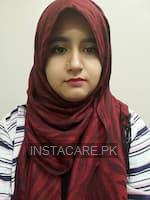Tinea Versicolor - Symptoms, Risk factors and Treatment
Last Updated On Wednesday, December 24, 2025
Tinea Versicolor in Urdu
Tinea versicolor، جسے pityriasis Versicolor بھی کہا جاتا ہے، جلد کا ایک غیر متعدی فنگل انفیکشن ہے۔ فنگی اور بیکٹیریا ہمیں گھیر لیتے ہیں۔ ہمارا مدافعتی نظام ان کے خلاف کام کرتا ہے۔ تاہم، بعض حالات میں، وہ ہم پر حملہ کر سکتے ہیں اور متاثر بھی کر سکتے ہیں۔ فنگس آپ کی جلد کو متاثر کر سکتا ہے جس کی وجہ سے Tinea Versicolor ہوتا ہے۔ یہ جلد کی عام رنگت میں مداخلت کرتا ہے، جس کے نتیجے میں دھبے بنتے ہیں جو آپ کی جلد کے رنگ کے مقابلے میں گہرے یا ہلکے ہوتے ہیں، جو تنے اور کندھوں پر ظاہر ہوتے ہیں۔ زیادہ تر یہ نوعمروں اور نوجوانوں میں ہوتا ہے۔ یہ سورج کی نمائش پر ظاہر ہوتا ہے. ٹینی ورسکلر کوئی تکلیف دہ حالت نہیں ہے۔ لیکن یہ جذباتی پریشانی اور سماجی اضطراب کا باعث بن سکتا ہے۔
علاج میں عام طور پر ٹاپیکل اینٹی فنگل کریم، لوشن اور شیمپو شامل ہوتے ہیں۔ لیکن کامیاب علاج کے بعد بھی جلد بے رنگ رہ سکتی ہے۔ یہ زیادہ تر گرم اور مرطوب موسم میں ہوتا ہے۔
Tinea Versicolor in English
Tinea versicolor, also known as pityriasis Versicolor, is a non-contagious fungal infection of the skin. Fungi and bacteria surround us. Our immune system works against them. However, in certain conditions, they can attack us and infect too. The fungus can infect your skin causing Tinea Versicolor. It interferes with the normal pigmentation of the skin, leading to the formation of patches that are darker or lighter in color as compared to your skin color, appearing on the trunk and shoulders. Mostly it occurs in teenagers and young people. It becomes apparent upon sun exposure. Tinea versicolor is not a painful condition. But it can lead to emotional distress and social anxiety.
Treatment usually includes topical antifungal creams, lotions, and shampoos. But the skin may remain discolored even after successful treatment. It mostly recurs in warm and humid weather.
Symptoms
The most common symptom of tinea versicolor is discolored patches of skin that mostly show up on the back, neck, chest, and arms. The characteristics of those discolored patches can be;
- Lighter or darker than the normal complexion of a person
- Pink, red, or brown in color
- Tan patches
- Patches that are scaly, itchy, and dry
- Get more prominent upon sun exposure or tanning
- Mostly they disappear in cool, less humid weather
In dark-colored people, Tinea Versicolor may cause patches that are lighter in color as compared to their color- a condition called hypopigmentation. In some people, it may cause light-colored patches in the skin- a condition called hyperpigmentation. Along with color changes, it may cause itchy skin.
Causes
Normally fungus presides over your skin. But when it overgrows it causes Tinea Versicolor. Factors that trigger it are;
- Hot and humid weather
- Hormonal changes
- Oily skin
- Weakened skin
- Having a disease that weakens your immune system like AIDS, malignancies, and repeated infections
- Taking medications that suppress the immune system like corticosteroids
- Undergoing therapies that suppress the immune system like radiotherapy or chemotherapy for cancer
Treatment
Tinea Versicolor is a fungal infection, therefore, the healthcare providers will prescribe you antifungal drugs. Depending upon the severity they may choose a topical delivery system or may prescribe oral antifungal drugs. Over the counter available antifungal drugs are;
- clotrimazole
- miconazole
- selenium sulfide
- Terbinafine
- fluconazole
- itraconazole
- ketoconazole
Moreover, you may also need to apply the following antifungal creams to get rid of Tinea Versicolor.
- ciclopirox
- ketoconazole
Prevention
To prevent Tinea Versicolor infection, you must exercise the following tips.
- Avoid excessive heat
- Take shower daily
- Use antifungal creams as prophylaxis
- Use a shampoo that contains selenium sulfide
- Avoid excessive exposure to sun and sweat
- Keep a towel in the gym and keep wiping your sweat
Conclusion
Tinea versicolor, also known as pityriasis Versicolor, is a non-contagious fungal infection of the skin that occurs in teenagers and young people. It becomes apparent upon sun exposure. Tinea versicolor is not a painful condition. But it can lead to emotional distress and social anxiety. In dark-colored people, Tinea Versicolor may cause patches that are light in color as compared to their color- a condition called hypopigmentation. In some people, it may cause light-colored patches in the skin- a condition called hyperpigmentation. Along with color changes, it may cause itchy skin.
Tinea Versicolor is a fungal infection, therefore, the healthcare providers will prescribe you antifungal drugs. Depending upon the severity they may choose a topical delivery system or may prescribe oral antifungal drugs.
Treatment usually includes topical antifungal creams, lotions, and shampoos. But the skin may remain discolored even after successful treatment. It mostly recurs in warm and humid weather.







